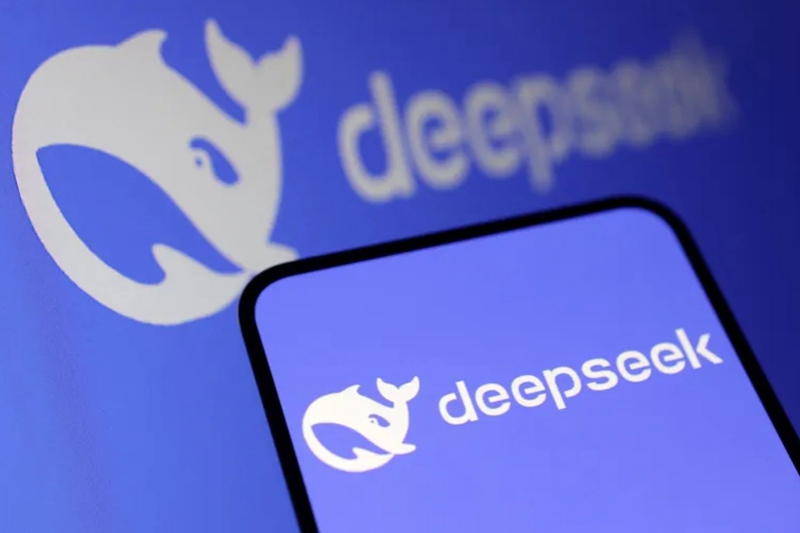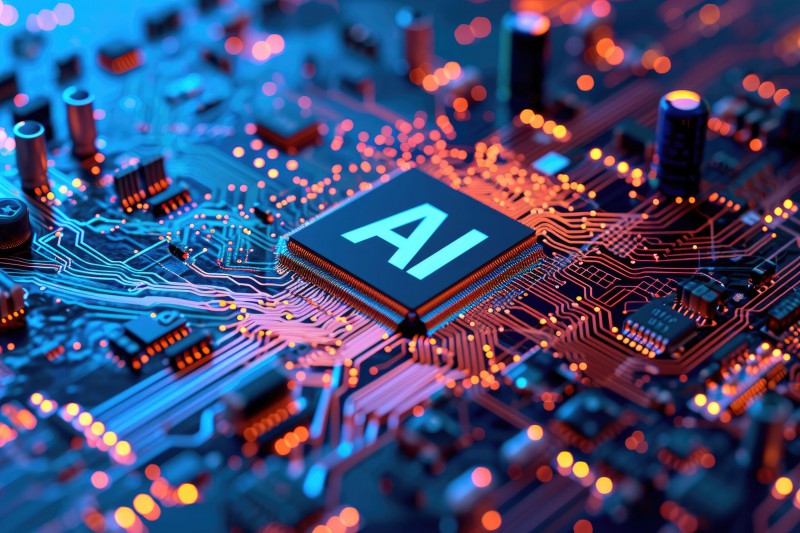
AI technology reconstructs the industry ecology, and the digital printing track ushers in the "intelligent revolution".
Since 2023, the artificial intelligence company DeepSeek has set off a huge wave in the global technology community with its breakthrough progress in AI generative technology. The outstanding performance of its underlying model in multimodal processing, image generation, semantic understanding and other fields has unexpectedly detonated an intelligent revolution, so equipment manufacturers, design service providers, and printing companies in the digital printing industry chain are pouring into this track at a rare speed. From industrial-grade digital printer manufacturers to cultural and creative gift customization shops, an industry reshuffle driven by AI has quietly begun.
The impact of DeepSeek technology on the digital printing industry stems from its subversion of three core links:
1. Exponential improvement in design efficiency
Traditional print design requires a long process of copywriting planning, graphic design, and typesetting and proofreading, while the AI tools supported by DeepSeek can complete the entire process from copywriting generation to visual design within 5 minutes. Tests by a packaging company show that the design speed of Mid-Autumn Festival gift box has increased by 20 times, and designers only need to choose the optimization direction from the 30 solutions generated by AI DeepSeek.
2. Intelligent closed loop of printing process
By connecting to the color management system of printing equipment, DeepSeek technology can automatically calibrate the CMYK color value, ICC settings and other parameters of the design draft. After a printing factory in Dongguan introduced the AI system, the downtime caused by file format errors was reduced by 87%, and the paper loss cost was reduced by 42%.
3. Personalized and customized companies benefit greatly
With the help of AI image generation technology, users can automatically generate customized designs that match the product form by uploading a photo. After a mobile phone case company in Shenzhen connected to the DeepSeek API, its C2M (customer-to-manufacturing) orders exceeded 100,000 per day, while the average daily order volume under the traditional model was less than 3,000.

In this wave of AI, companies in different industries are seizing market with differentiated strategies:
1. Transformation of traditional equipment manufacturers into AI service providers
HP Indigo, the world's largest digital printing machine manufacturer, launched SmartStream Designer, integrating DeepSeek algorithm to achieve one-click "design-printing"; Hanhong Group, a leading China company, has developed an industrial inkjet system that supports AI variable data printing, so that each printed product can carry unique content.
2. E-commerce platforms build C2B intelligent hubs
Alibaba International Station launched the AI printing workbench, and small and medium-sized sellers can generate 500 sets of packaging design solutions that meet the aesthetics of the target market by entering keywords; in Amazon's customized product category, the sales of AI-driven T-shirts, canvas bags and other printed products increased by 320% year-on-year.
3. Design service providers turn to technology enablers
Platforms such as Zhubajie.com and Techuangyi, which were originally based on human services, have launched AI design SaaS tools. The head of a design company admitted: "In the past, a team of 10 people produced an average of 20 solutions per day. Now one operator can make 200 standardized solutions with the help of AI."

The Hidden Problems Behind the Carnival
Although the market heat continues to rise, industry reefs have already emerged:
1. Intensified competition in technology homogeneity
The AI application of most companies are still at the application layer development of DeepSeek open source model. More than 20 "AI printing tools" with similar functions have appeared in a certain industrial belt in Shenzhen City. The price war has caused the gross profit margin of some companies to fall below 15%.
2. Copyright disputes are unresolved
Does the pattern generated by AI constitute infringement of the original design work? A clothing company in Hangzhou was sued for using the "blue and white porcelain pattern" generated by AI, exposing the legal risks of AI data compliance.
3. Hardware iteration lags behind the software revolution
Although AI has greatly improved design efficiency, the physical accuracy of digital printing equipment (such as 1200dpi resolution) and the adaptability of special materials (such as metal and glass) still restrict the implementation of technology. An engineer from an industrial printer manufacturer said: "AI can design cool 3D grating effects, but our equipment cannot achieve the designed printing effect."
Future vision: The battle for the "ultimate form" of digital printing
Industry experts predict that with the continuous evolution of AI technologies such as DeepSeek, digital printing will show three major trends:
1. Migration of production mode to "smart cloud factory"
Distributed printing nodes are coordinated through the cloud AI center. Customized notebooks ordered by users in Beijing may be automatically allocated by algorithms to shared printing terminals in an office building in Shanghai for production.
2. Product boundaries break through physical limitations
AR technology combined with AI printing makes paper packaging present dynamic effects. The "magic gift box" tested by a beauty brand, users can scan with their mobile phones to see AI-generated product efficacy demonstrated by virtual spokespersons.
3. Environmental revolution drives technology upgrades
AI optimization algorithms can increase the utilization rate of printing materials to 98%, and shorten the development cycle of water-based
pigment ink from 18 months to 3 months. A Dutch company has launched an AI-based "zero-waste printing solution" that reduces carbon emissions by 65%.
In this industry earthquake caused by DeepSeek, the real winners may not be the earliest entrants, but those innovators who can build an "AI+hardware+supply chain". As
digital printing moves from "mechanical replication" to "intelligent creation", this seemingly traditional industry is writing a new business legend in the AI era.
 Feb 22,2025
Feb 22,2025


